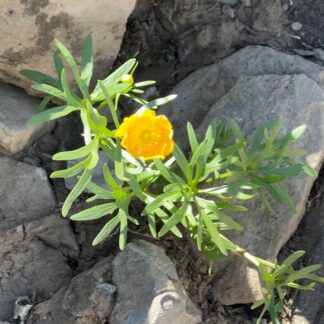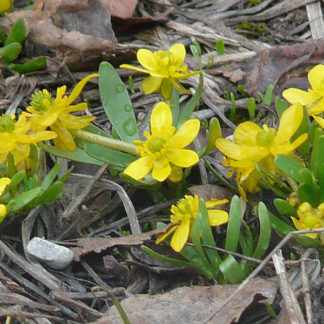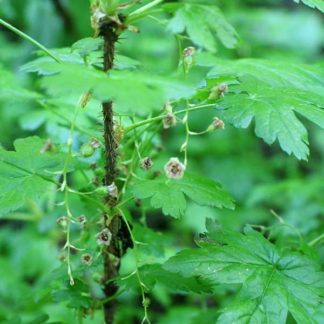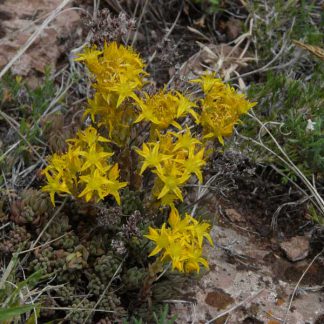interesting bits
Showing 85–96 of 109 results
-

Purshia tridentata / antelope bitterbrush
- small yellow, 5-petal flowers in early spring
- small shrub, often in large "clumps"
- leaves look like sagebrush (Artemesia tridentata)
-

Ranunculus adoneus / alpine buttercup
- short, high altitude plant
- rocks or moist meadows
- yellow "buttercuppy" flowers, 5-10 petals
- huge numbers of stigmas
- highly lobed, finely dissected leaves
-

Ranunculus glaberrimus / sagebrush buttercup
- one of the earliest spring flowers
- yellow flowers, ca. 1" across
- usually 5 shiny/waxy petals, numerous stamens
- short, mostly elliptical leaves
- in small to field-sized clumps
- very poisonous
-

Ribes aureum / golden current
- shrub up to 10 feet tall
- spring bloomer, golden yellow flower in clusters
- small, maple-like leaves
- 1/2 inch berries in late summer, golden to black
-

Ribes lacustre / prickly currant
- deeply lobed, maple-like leaves
- prickly stems with spines at nodes
- shrub to ca. 4 feet tall
- teeny cream & purple flowers in dangling clusters in spring
- red berries in late summer maturing to very small black berries
-

Rumex crispus / curly dock
- rather large, lance-shaped leaves
- curly leaf margins, like crisped bacon or "crinkly-wavy"
- tall flowering stalks with many, many small yellow/green-ish flowers
- fruits are just like the flowers but deep red
- widespread and very much a weed
-

Scrophularia lanceolate / lanceleaf figwort
- teeny, snapdragon-like flowers
- flowers urn-shaped, mostly yellow, with red or green at the tips
- flowers look like they aren't yet opened
- flowers on elongated panicle at the top of a tall-ish plant
- opposite leaves like stinging nettle without the stingers
- up to 5 feet tall in full sun/partial shade
-

Scutellaria galericulata / marsh skullcap
- riparian zones and wetlands
- blue, trumpet shaped (legume) flowers; usually in pairs on same side of a stem
- flowers not at the top of the stems
- square stems, widely spaced opposite leaves; adjacent pairs at right angles
-

Sedum lanceolatum / lanceleaf stonecrop
- bright yellow, star-shaped flowers (possible red tinge)
- fleshy/succulent, small leaves (green, yellow or red)
- open rocky outcrops, gravelly sites
- drought tolerant
-

Senecio integerrimus / tall western groundsel
- early spring to early summer, often with larkspur
- bright yellow flower head with several, disheveled looking blossoms
- only 5-13 ray florets (petals)
- cobwebby hairy basal leaves, especially when young
- seasonally moist areas, from sagebrush to higher parts of the fen
-

Shepherdia canadensis / Canadian buffaloberry
- deciduous shrub, opposite branches and leaves; understory
- trichomes (hairs) on lower, often upper surfaces.
- lower surface has rust-colored scales
- teeny yellowish flowers before leaves appear; male and female on separate plants
- red or orange, oval fruits with one stony seed; soapy when crushed
-

Solidago canadensis / goldenrod
- large sprays of yellow flowers in late summer and fall
- often tall and in large colonies
- lance-shaped, toothed leaves
- mostly (but not always) in disturbed areas
Showing 85–96 of 109 results